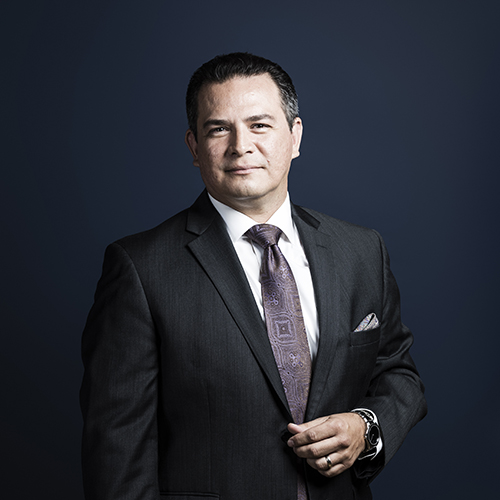
When Terry Jimenez was in college during the early 1990s, he was told that the accounting field was one of the few with job opportunities. He rolled up his sleeves, focused on getting his grades up in accounting, took the CPA exam, and found himself an accounting job at McDonald’s Corporation.
Since then, Jimenez has held finance positions at a variety of companies: Donato’s Pizzeria, the Chicago Tribune, Newsday (owned by Tribune and then Cablevision), and most recently IBM. He was part of the global deal team, which helped large, complex transactions get completed for potential new clients. The role sent him around the world for nearly four years: Warsaw, Montreal, Sao Paulo, Sydney, London, Amsterdam, and Stockholm. “I worked hard, but I did see a lot of the world without having to pay for it,” he says with a smile.
Now he’s back in Chicago as executive vice president and chief financial officer at Tronc, formerly Tribune Publishing. In his role, he not only oversees finance but also information technology, most recently the company’s manufacturing and distribution group. Jimenez sat down with Hispanic Executive at the Tribune Tower to share what it’s like to return to the media industry during such a transformational period.
Why did you decide to return to Tronc?
I was enjoying the IBM experience, without question. I wasn’t really looking to leave. I was somewhat intrigued by the offer at first, but I was also hesitant. I felt like I had been there, done that with the industry. I had been in the media industry for about ten years before that in a variety of different roles; I’d continue to grow and learn through the IBM side. When I had a couple of conversations, it became very clear that this is a great opportunity. Having a new management team, a great set of brands, and the fact that I was absent from the industry and the company for a number of years, I felt like I could actually come back with some fresher perspective—especially with a technology view—than if I would have just stayed in the industry.
What were some of the biggest challenges during those first few months when you got back?
Tribune Publishing had just spun out as an IPO back in 2014. They had some natural bumps through that transition. The first two years out of the spin, the company had disclosed material weaknesses in internal control over financial reporting, which is not great for a public company. That was one of my key focus areas, to make sure that, in the first year that I was here, that we didn’t have that repeat. We had it the previous two years, and we definitely didn’t want a three-peat. Quickly thereafter, we dealt with a hostile bid, really week two on the job. It was trying to figure out how we invest in the business, restructure the business, and focus the finance team, and at the same time going down a path of working with a potential bidder. It was an interesting transitional year, for sure.
Did you make any big changes with the finance team when you started?
I think the team was ready for a change, vision, and leadership. After I arrived, I rolled out a finance vision for us to be a best-in-class finance organization that’s driving change and not just reporting results but also being on the front end. I had to set that vision along with a number of goals by functional area. That format still exists; we’ve updated it again this year.
What is the most exciting aspect of this transformation?
It’s definitely a long journey, and I think there’s a lot of things we need to accomplish to meet our objectives. The challenging part of it is, you can picture the destination being very positive and a place that you want to go to, but along the ride, there are a lot of bumps. I think keeping people focused and motivated during those bumpy periods is challenging. It does test out the internal strength of the people that work with you on the team.
What are some ways you’ve helped lead the company from your seat as the CFO?
What I try to instill in the team is being a best-in-class organization. It’s really not taking a backseat and just reporting the results. It’s bringing insights to the data and making it actionable so that the line managers that are driving the business can make real-time, or near real-time, decisions that benefit the business.
What are some of your big goals over the next couple of years?
Organizationally, it’s about how we can evolve the company and dramatically change how we think about going to market and executing the business. The business is roughly about 80–85 percent on the print side, and then 15–20 percent on digital. We need to become 80–85 percent digitally focused and have the results reflect that. Over the next several years, the focus is on how we do that organically, with the assets on the teams that we have, and then how we also accelerate that through acquisitions and driving growth for the business. I think those are the key things that we are focused on; how we reshape the company to not just survive but also to thrive long term.

